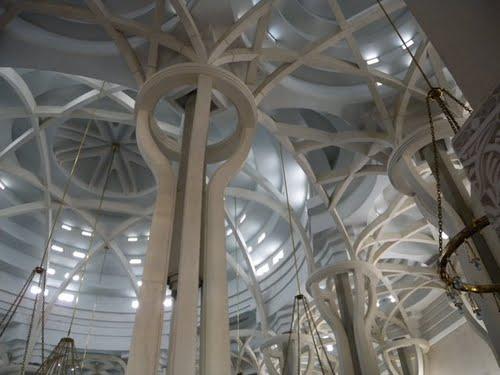
The
Churches of Rome
The locations of all places are shown on my Google-Earth Map
Non-Catholic Sanctuaries and other Roman Oddities
Google-Maps (increase the magnification this map is in 3-D)
The
Mosque of Rome
Via
Mosche northwest of Villa Ada,
1995

Interior of the new Mosque in Rome
The mosque of Rome was commissioned and funded by King Faisal of
Saudi Arabia. The building was designed and directed by Paul
Portuguese , Vittorio Gigliotti , Sami Mousawi and Nino Tozzo.
Its
construction took more than two decades: the donation of land was
approved by the City Counci ofl the Rome in 1974 , but the first
stone was laid only ten years later, in 1984, inauguration took place
on 21 June 1995

The Jewish community of Rome goes back to the 2nd century BC when the Roman Empire had an alliance of sorts with Judea under the leadership of Judah Maccabeus. At that time, many Jews came to Rome from Judea.
Shortly after the unification of Italy in 1870, Victor Emmanuel II dismantled the Roman Ghetto and granted the Jews of Rome full citizenship. The building that had previously housed the main synagogue was demolished and the community began making plans for a new and impressive building.
The present Great Synagogue was built between 1901-1904 on the banks
of the Tiber River and overlooks the former ghetto area.
More...
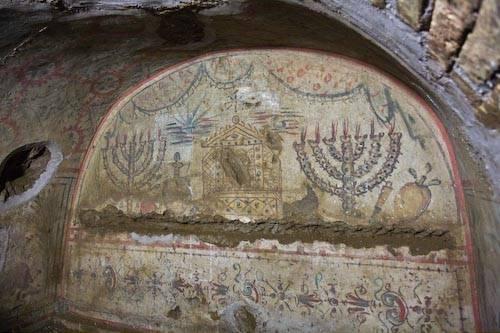
Painting in the Jewish catacombe in the Villa Torlonia
The Jewish catacombs at Villa Torlonia were discovered in 1918, and archaeological excavations continued for twelve years. The structure has two entrances, one on via Syracuse and the other inside Villa Torlonia. The catacombs extend for more than 13,000 square metres (140,000 sq ft), and date back to the period between the 2nd and 3rd centuries, and possibly remained in use until the 5th century. There are almost a century of epitaphs, but these do not show any examples of a particular relief, beyond some rare frescoes showing the classic Jewish religious symbols.
The other catacombs are not open to the public because of the
instability of their structure and the presence of radon.
More...
Israelite
Cemetery
Jewish
Grave Section in the Verano Cemetery 19th-21st
cent
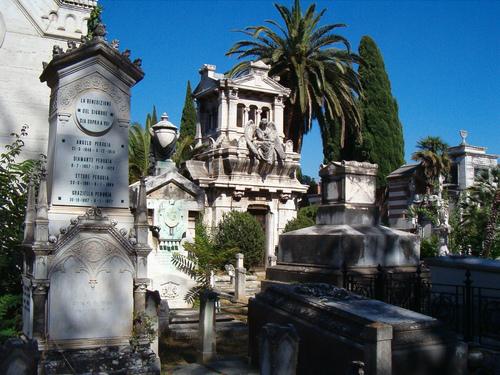
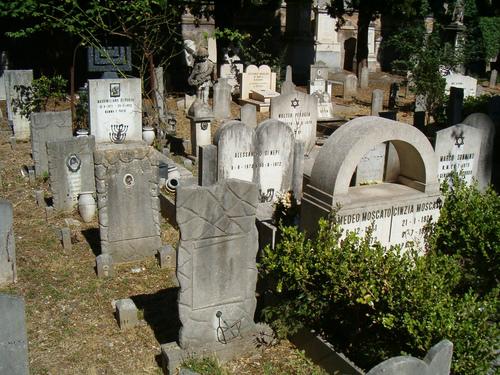
Ospedale
d'Israelitico
Tiber Island,
16th-21st
cent
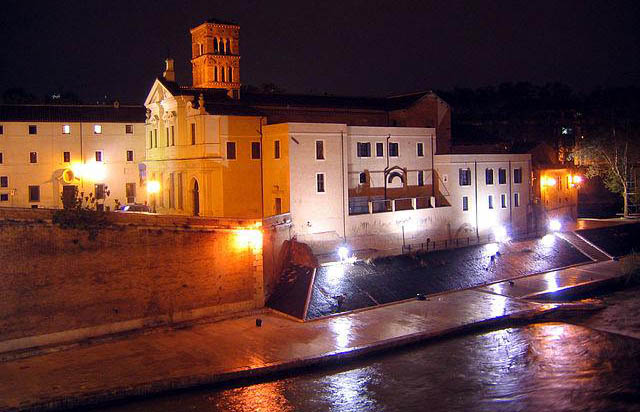
The Jewish hospital and the tower of St. Bartholomeo on the River Island seen from the left bank of the river.
This hospital, going back to the 16th cent, is still operational as an outpatient clinic. In partnership with the Italian Nat. Health Service the Israelite Hospital inaugurated new headquarters near the district of Magliana in 1970, acquiring a building appropriate to accomodate a large number of beds in a modern facility: Ospedale d'Israelitico on Via Fulda 14, 00148 Roma.
Protestant
Cemetery
Cimitero
Acattolico, next to the Piramid Cestia,
1738-21st
cent
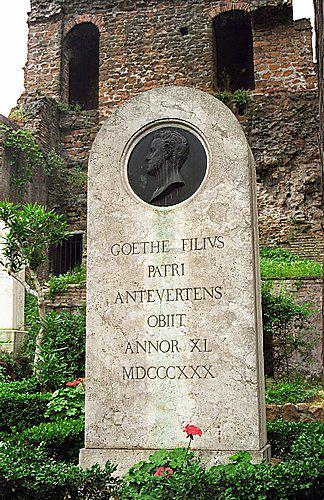
The grave of August von Goethe (1789–1830), son of Johann Wolfgang
von Goethe;
Medallion by Bertel Thorvaldsen
The earliest known burial at this cemetery is that of an Oxford
student named Langton in 1738. The most famous graves are those of
the English poets John Keats (1795–1821) and Percy Bysshe Shelley
(1792–1822). Keats died in Rome of tuberculosis.
More...
Santa
Maria dell'Orazione e Morte
Via
Julia near the Tiber, Piazzale dei Fiori and Villa Farnese,
1576
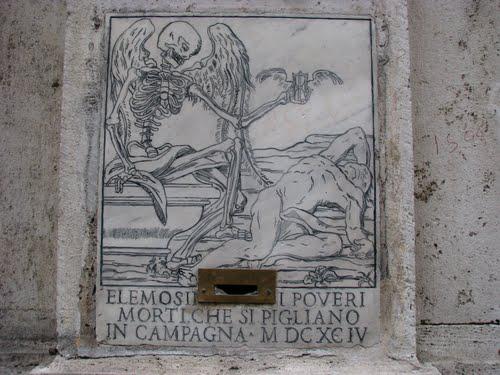
"A haunting reminder of one woman's life, an inscribed skull
rests with others in a hallway of the crypt below the church of Santa
Maria dell'Orazione e Morte. Built in 1576, the church was the
headquarters of the Society of a Good Death, which was dedicated to
providing proper burials for the poor. Over a 300-year period, some
8,000 bodies were buried in the church's underground chambers, but
most were destroyed during the construction of the Tiber River's
embankment during the late 1800s."
Quoted from “Ruins Under
Rome", Nat.
Geographic Magazine
Santa
Maria della Concezione dei Cappuccini
Via
Vittorio Veneto near Piazza Barberini,
18th
cent

The church is unimportant, the attractions are the Crypts of the Cappuccini underneath the church! -